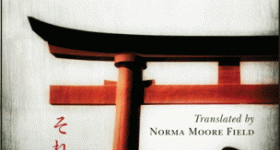FOR GENERATIONS OF HMONG, the written word was considered dangerous.
The Hmong maintained a rich oral- history tradition, but they had no written language. Stories, as told by skilled storytellers, served both to entertain audiences and to impart cultural knowledge to younger generations. It was not until the 1950s that Christian missionaries introduced into Laos, along with Western religion, a Latin-based writing system — the Hmong Romanized Popular Alphabet — that displaced old ways of storytelling and communicating.
Cultural fallout from the new writing system still affects Hmong Americans, but the younger generation believes that writing is the key to community empowerment. Through writing, Hmong American literary organizers say, the youth can retain the traditional storyteller’s role and develop the Hmong American presence in American literature.
“I fear [that storytelling] could become extinct with the passing of our elderly generation,” Hmong American poet Burlee Vang, 27, says. “My generation has turned to different mediums to express their stories — to writing, painting, music and movies.”
Shifting to the written word is inevitable, according to Vang, a poet who is pursuing a master of fine arts degree at California State University, Fresno. “Writing is change. Art is change. Through this creative expression, we are able to reinterpret our identities and break stereotypes,” he says.
Vang noticed the lack of Hmong American voices in American literature. So in 2004, Vang set out to find Hmong American writers and nurture their work through a creative workshop: the Hmong American Writers’ Circle (HAWC).
“I wanted to see the birth of a body of literature by Hmong Americans,” Vang says. “[We are] the first of our kind here in California and on the West Coast, and it is through groups like ours that people will start hearing the authentic voices of the Hmong themselves.”
The group is diverse, made up of Hmong and non-Hmong from varying generational, professional and educational backgrounds in California’s Central Valley, where there is a large Hmong population. Andre Yang, 27, has been a member from the beginning — although he, like many Hmong, was initially wary of the idea of writing as art. “It was only later, after discovering my love for poetry and participating in the workshops, that I began to understand the importance and necessity of a group like the HAWC,” Yang says.
After years of meeting to share work, the HAWC has started engaging in other projects and events. In the summer of 2008, the group held its first major public event, a reading at the Fresno Art Museum. Now the HAWC is editing a Hmong American literary anthology that features fiction, creative nonfiction, poetry, plays and visual arts from Hmong American writers in California’s Central Valley (to be published by Heyday Books in 2011). The pieces cover a broad range of topics, some Hmong-related, others not. Yang and Vang hope that anyone who reads the stories will be able to identify with them.
To achieve an accurate representation of collective experiences, it was necessary to focus on writers from one geographic area, according to Yang. “Many Hmong, my parents included, were attracted to the mild climate and strong agricultural base here, which enabled them to hold on to a similar way of life,” he says. “On the other hand, Fresno exposed them to a more multi-ethnic population, which resulted in different struggles, perspectives and outlooks on life.”
Writing is not a traditionally popular career path in the Hmong community, but Yang and Vang say interest is growing. “More and more young Hmong Americans … believe in the art and power of words and are starting to pursue writing seriously,” Yang says. “It’s definitely a goal of ours to reach out to young people and to bring the writers workshop to their schools.”
As one among few groups in the United States dedicated to Hmong American literary arts, HAWC plays a significant role in establishing Hmong writers in American literature. “Considering that the majority of texts about the Hmong have been studies written by non-Hmong scholars, what we’re doing here is pioneering work,” Vang says.
Theresa Tarpey is a food and lifestyle writer living in San Francisco. This is her first piece for Hyphen.









Comments